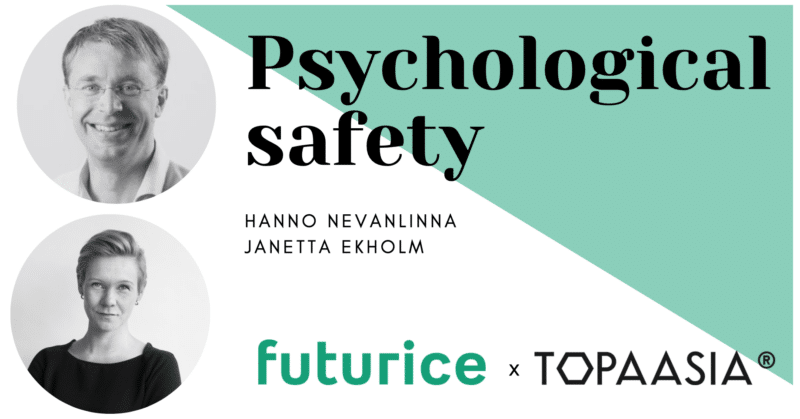
Hanno Nevanlinna & Janetta Ekholm have been interviewed in this article. Hanno is one of the founders and cultural director of Futurice. Janetta is Futurice’s Director of Ways of Work and Head Agile Coach. Founded in 2000, Futurice is a software house known for its culture and values, which employs approx. 600 professionals. Together with Hanno and Janetta, we have made a Topaasia game deck Psychological safety and in this interview, Hanno and Janetta open their thoughts around psychological safety.
What is psychological safety and why it is not nonsense?
Ekholm: Psychological safety means an atmosphere between a group of people. It’s shared by everyone and everyone has their own perspective on that mood. The level of psychological safety determines how group members are able to participate in a group discussion and bring out their own thoughts, questions, ideas, and doubts.
To the nonsense, I would say that psychological safety as a phenomenon has been studied for quite some time, but it is only now clearly beginning to break from a work development perspective and because of that there is such a bullshit-bingo atmosphere because the term is carelessly tossed around without thinking what it really means.
Psychological safety is a really concrete and mundane thing. There is an atmosphere of psychological safety in every situation. We should go from Bullshit bingo to the point of really thinking about how it looks in different situations and how it affects what is achieved together, and how we can take care of it all the time.
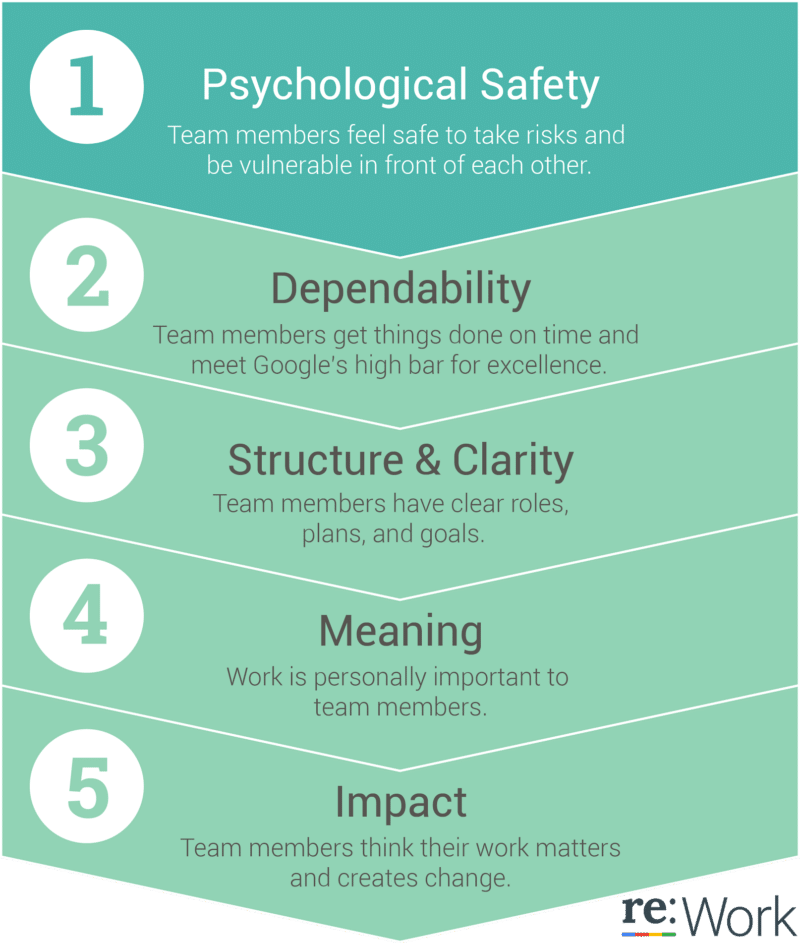
Google’s internal Aristotle study has examined teamwork and efficiency. According to this, everything starts with psychological safety among team members. (Image source: https://rework.withgoogle.com/guides/understanding-team-effectiveness/steps/identify-dynamics-of-effective-teams/)
Why is psychological safety important?
Nevanlinna: Today, all things are done together. That is why it is important to have different skills on the table at the same time, but those skills are of no use unless people dare to put themselves out there.
This has been explored by Google and many others: What correlates most with the fact that a team is successful and productive? And they found out it is how much you dare to say suggestions that might be bad and how much you dare to give of yourself in front of other people.
As much as the term psychological safety is tossed around, it is clear that if we want motivated teams, we need to invest in the factors that really make a team a team. And those factors are the way we interact with each other.
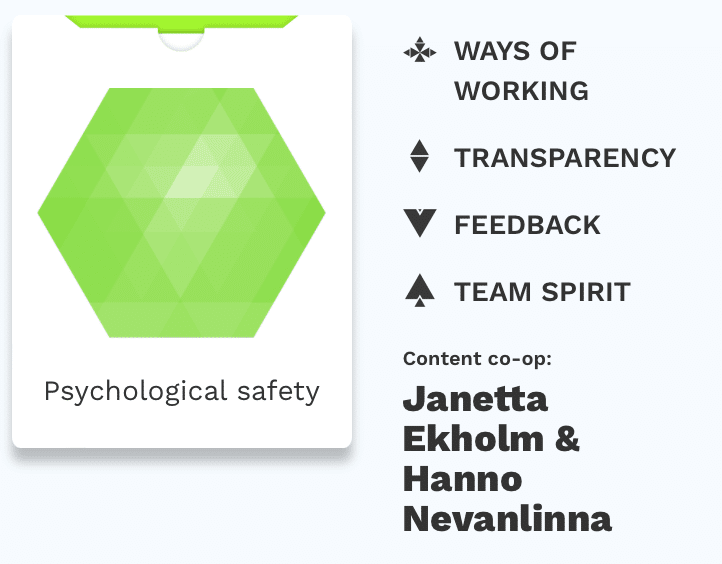
The Psychological Safety game consists of four different themes, each with 13 cards underneath to help the team deal with and develop their own level of psychological safety.
So psychological safety is something that the team has and influences?
Nevanlinna: Yes. It’s the feeling that comes with working together.
Ekholm: Google talks, for example, about the importance of being able to take risks in collaboration. It underlines that it’s easy to collaborate when it comes to easy, nice, and familiar things. Indeed, collaboration and psychological safety are seriously measured only when it comes to new, difficult, uncertain issues that evoke thoughts in team members such as I have no idea, I’ve never done this before, or maybe this is a stupid question. When we have to take the risk that others will perceive me as stupid, inexperienced, or thoughtless, put our own vulnerability on the desk and see how others feel about it.
What are the ideas behind psychological safety?
Nevanlinna: It is a counterweight to the traditional idea that goes back many years and is still prevalent in quite a few organizations around the world. The idea is to tell the team what they need to do, and then when they don’t get it done enough, they’re told to get more done. By telling them, they will magically do more and better. I don’t know if that’s ever been the case, but it’s been a traditional leadership doctrine that commanding gets a better result. After all, managers are paid for the fact that others are productive and this creates a contradiction as to why psychological safety can seem like a tricky topic for managers: I just work here, you don’t have to feel safe here as long as you’re productive.
From there, we end up with the theme of psychological safety that a leader, rather than telling others to do more and better, should help others function better together as people, better understand the common goal and its importance. The leader helps to solve the frictions between people in different ways, and thinks about how a dream team is created where the chemistry resonates in the right way.
Ekholm: Psychological safety is also related to team diversity. The more different backgrounds we have, the more diverse solutions we can produce, but the harder it is to work together because we use different words, value different things, and have to come to an agreement on what we are doing and what is valuable in it. Being able to discuss these things requires that we feel safe enough to talk about them.
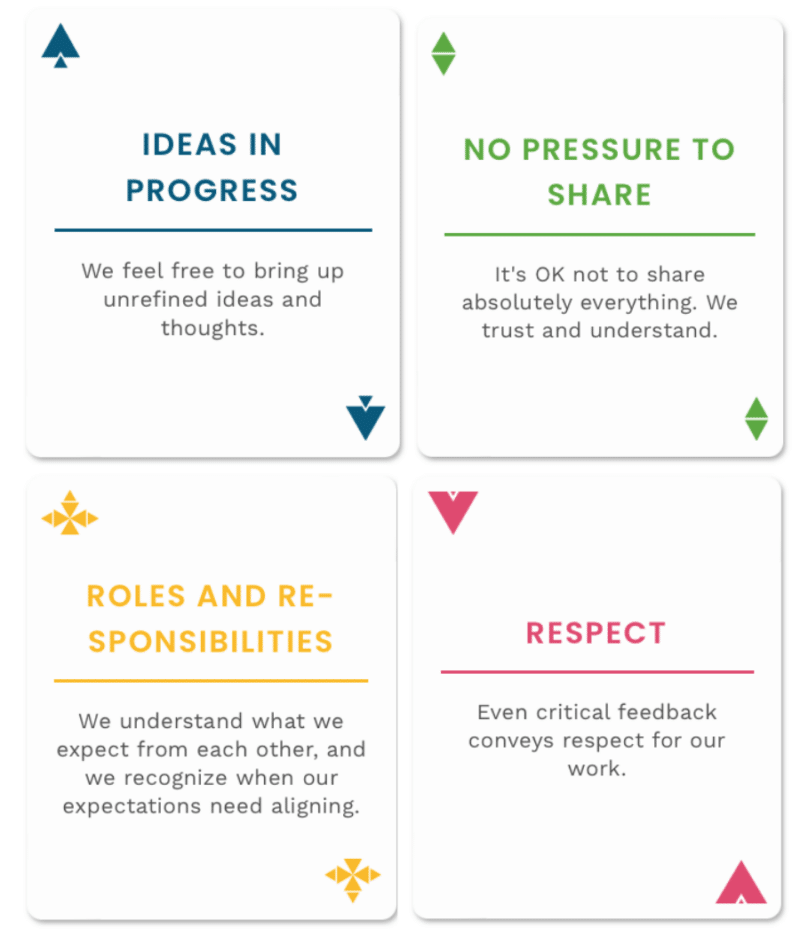
Psychological Safety – There are 52 different cards in the game to help you reflect and discuss
Is psychological safety only related to group’s creative problem solving or is it a broader phenomenon?
Nevanlinna: I would say it is a vast and universal phenomenon. And on the other hand, what is not creative problem solving? Even football team or team on construction site are doing creative problem solving all the time. It must be possible to trust another equally. Dare to report mistakes or not offend anyone. I would say that psychological safety is needed wherever work is done together.
Ekholm: It is often narrowly seen that the tasks of creative problem solving are only the early stages of innovation and the tasks of the propeller hats, artists or R&D. In reality, any interpersonal work requires creative problem solving and then psychological safety is especially important.
Nevanlinna: Let’s take the lean example of the Toyota car factory line a decade ago. There, an individual employee can stop the entire line when they find that the line is not working. The manager rushes to the scene, but he doesn’t rush to ask that what the hell did you stop this factory for, do you understand how much this costs ?! Instead, he will ask how he can help. In order to do so, a person in the line must have a good sense of safety about stopping the line and how he or she will be encountered when he or she does so.
Almost all functions and interactions are related to how psychological safety is constructed, which is why it is automatically a term that meets the definitions of bullshit bingo because it is related to a little bit of everything and means little bit of everything because it just is related to everything. Still, that doesn’t mean the term is automatically bullshit.
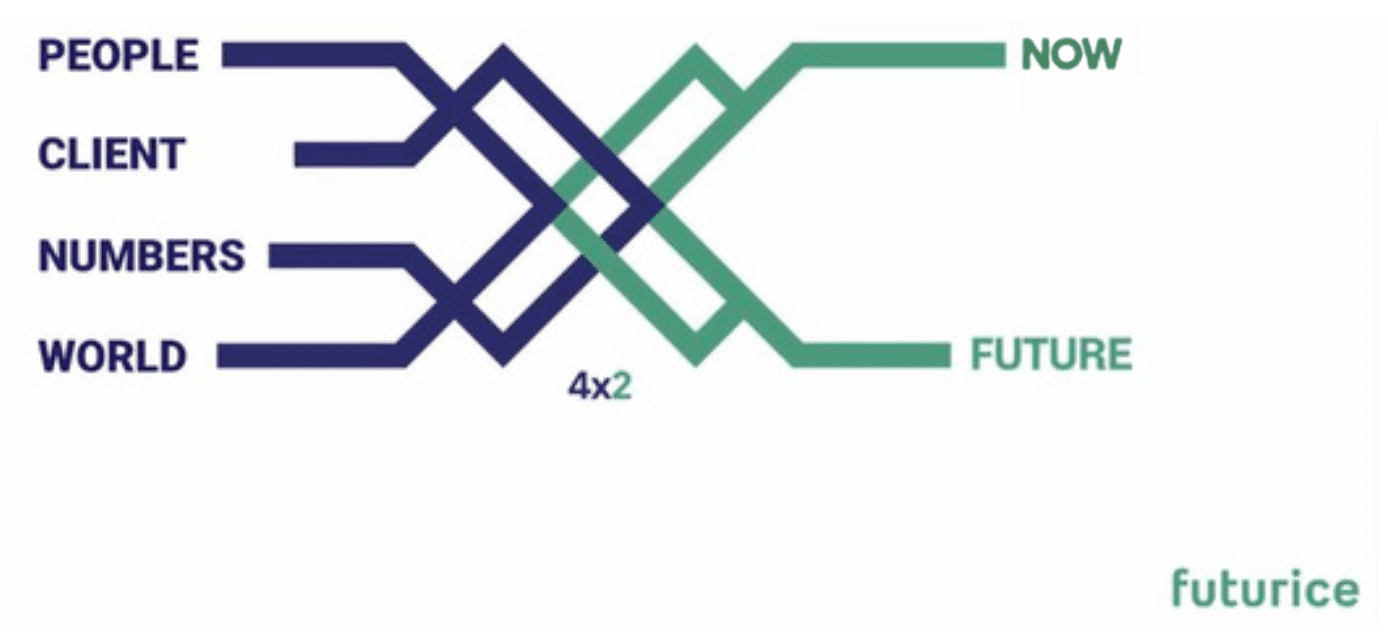
Futurice Decision Making 4×2 Model (https://futurice.com/blog/decision-making-at-futurice)
From the perspective of Futurice and your own work history, what is your relationship to promoting psychological safety?
Nevanlinna: Three of Futurice’s values have been involved from the beginning: trust, appreciation and continuous improvement. Transparency came later, others were from the beginning.
Our values ended up being the elements on which psychological safety is built. The first conscious things we did about 15 years ago when we started having weekly Weekly smiley – eventwhere people open up how they are doing right now. It is a habit that quickly builds mutual trust, that is, psychological safety.
Ekholm: Values are really important to us, they are used everyday and consciously. Specially trust relates to psychological safety. We have a really long history of how we hold these values to guide our policies. After all, they don’t give absolute answers, they give reflection points where we can think about what should be done.
We have been talking about psychological safety for years. Typically, everyone who comes to work for us goes through the onboarding phase, where the working methods section goes through these things. For example, we go through the values, and then the 4×2 idea, as well as the importance of psychological safety in a multidisciplinary team.
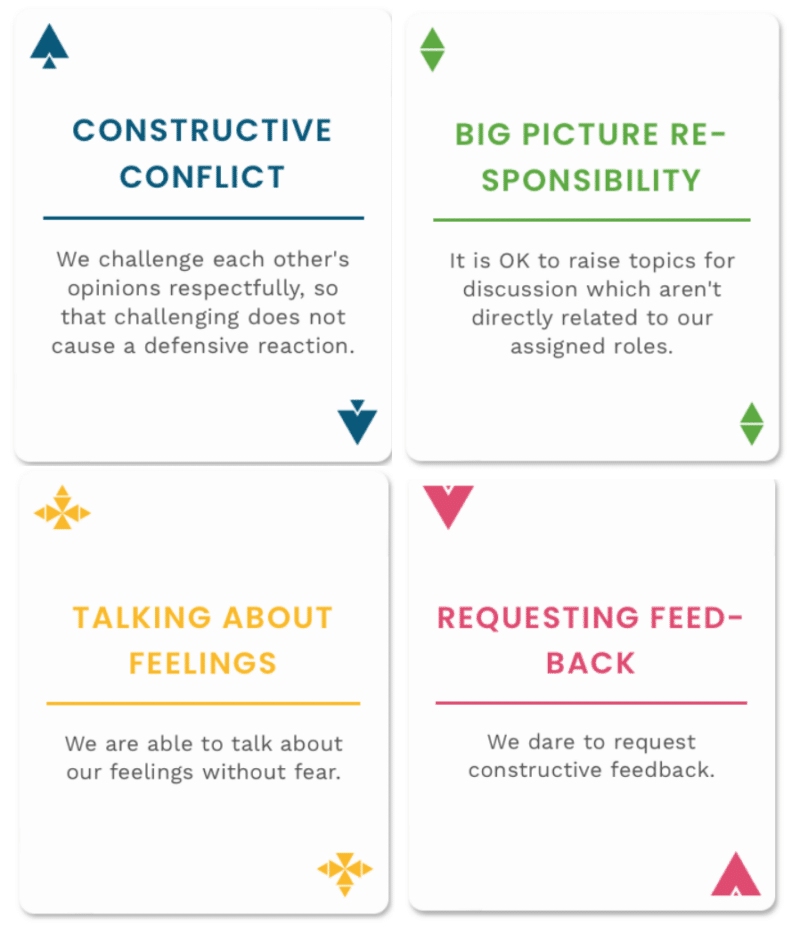
Four sample cards from the game Psychological safety.
What was the main idea to crystallize or say in these 52 statement cards?
Ekholm: Practical experiences and concrete ways of working. Psychological safety and everything around it may sound like a highcloud, but when you really think about how we work, we need common points of reflection:
How do I feel? How do you feel? How do we feel together? On a practical level, what could we do differently?
All the cards in the deck help with that. The Weekly smiley boards mentioned by Hanno, for example, are a concrete thing that builds it piece by piece every day.
Nevanlinna: Well said!
Thank you Hanno and Janetta!

